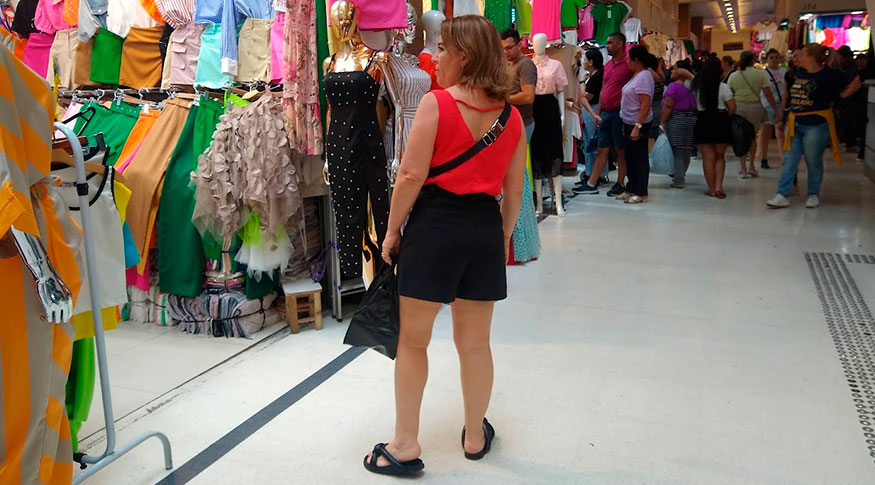Monthly Survey of Trade
After dropping in December, retail sales grow 2.5% in January
March 14, 2024 09h00 AM | Last Updated: March 15, 2024 02h23 PM

Between December and January, sales in the Brazilian retail trade increased 2.5%. This is the first statistically-significant rise since September last year, when it rose 0.8%. After that, trade remained stable for two months (-0.3% in October and 0.2% in November) and dropped in December (-1.4%). As a result, the sector was 5.7% above the pre-pandemic level, registered in February 2020, and 0.8% below its record level, hit in October 2020. The data are from the Monthly Survey of Trade (PMC), released today (14) by the IBGE.
“Retail trade came from two weak months, in which the results were quite below what they should be. This is a behavior noticed not only in 2024, but also in other years when, for example, there was a drop in sales in the end of 2022 and a recovery in January,” reminds Cristiano Santos, manager of the survey.
Five out of eight activities investigated in the survey advanced in January this year. Among them, the highlights were fabric, apparel and footwear (8.5%) and office, computer and communication equipment and material (6.1%), which exerted the major influences on the total result of the retail trade.
“In sectoral terms, the results grew in sectors that strongly dropped in the Holiday Seasons, after concentrating their sales in Black Friday. It happened with fabric, apparel and footwear, furniture and domestic appliances (3.6%), office, computer and communication equipment and material and other articles of personal and domestic use (5.2%), which, altogether, leveraged the growth of the retail in January,” highlights the researcher.
One of the most jeopardized activities during the Covid-19 pandemic, fabric, apparel and footwear fell 6.9% in December. “This sector is still far from recovering the losses in the pandemic. Among the activities surveyed, this is the second far from the level of February 2020, only behind the segment of books, newspapers, magazines and stationery, which is 46.7% below that level,” points out Santos. With the January´s result, the sector of fabric was 19.3% below the pre-pandemic level. They were seven months on the negative side last year.
He points out that one of the factors that hit the sector of fabric was the accounting crisis of major store chains. “In the end of 2022 and along the next year, some companies revisited their balances and had to close physical stores, taking the level downward,” explains the manager of the survey. Among the sectors mostly affected by the crisis, he highlights that of other articles of personal and domestic use, which includes department stores, and that of furniture and domestic appliances.
Hyper and supermarket, food products, beverages and tobacco was another sector that rose in January (0.9%). This segment, which is the third biggest weight in the survey (55.5%), is on the positive side for the third month in a row. “There is an influence of inflation, as well as of a bigger consumption of families, especially of food and beverages,” highlights him. In January, this sector was 9.9% above the pre-pandemic level.
He adds that the characteristic noticed in the segment of hyper and supermarkets is different from other activities, which are more related to sales promotions. “In these other sectors, the consumption was more concentrated in November, which is the month of Black Friday. So many people anticipated their Christmas purchases due to prices. And there is another sales promotion in January, to burn the stocks,” analyzes him.
The extended retail, which has two additional activities in this indicator, grew 2.4% between December and January, with a rise in vehicles, motorcycles, parts and pieces (2.8%).
On the other hand, three retail activities remained on the negative side in January: books, newspapers, magazines and stationery (-3.6%), pharmaceutical, medical, orthopedic articles and toiletries (-1.1%) and fuels and lubricants (-0.2%). When considering the extended retail, the negative change in the sector of construction material (-0.2%) also counted.
Among the activities that reduced their sales, that of pharmaceutical, medical, orthopedic articles and toiletries stands out as the third one with the highest weight in the survey, exerting the major negative influence this month. “This sector was also influenced by inflation, repositioning price levels between December and January, as well as the lower result of companies in the areas of toiletries and cosmetics,” notes him.
Six activities advance compared with January last year
In January, retail sales increased 4.1% in relation to the same period last year. The growth was spread along six out of eight sectors of the restricted retail: pharmaceutical, medical, orthopedic articles and toiletries (7.1%), hyper and supermarkets, food products, beverages and tobacco (6.4%), office, computer and communication equipment and material (4.3%), fabric, apparel and footwear (0.7%), fuels and lubricants (0.6%) and furniture and domestic appliances (0.3%).
On the other hand, the sectors of books, newspapers, magazines and stationery (-9.0%) and other articles of personal and domestic use (-2.2%) retreated in this period. In the extended retail, the three additional activities considered in this indicator remained on the positive side: vehicles, motorcycles, parts and pieces (11.9%), construction material (0.4%) and wholesale of food products, beverages and tobacco (16.1%).
“In the long term, the relation with the drop in the basic interest rate becomes more evident, causing the credit to expand, though still slower. Another factor is the increase in the employed population and in the wage bill, which also caused an impact on the growth of 4.1% in the year,” points out Santos.
More about the survey
PMC produces indicators to monitor the short-term behavior of retail trade in Brazil, investigating the gross revenue of formal enterprises with 20 or more employed persons and whose major activity is retail trade.




















